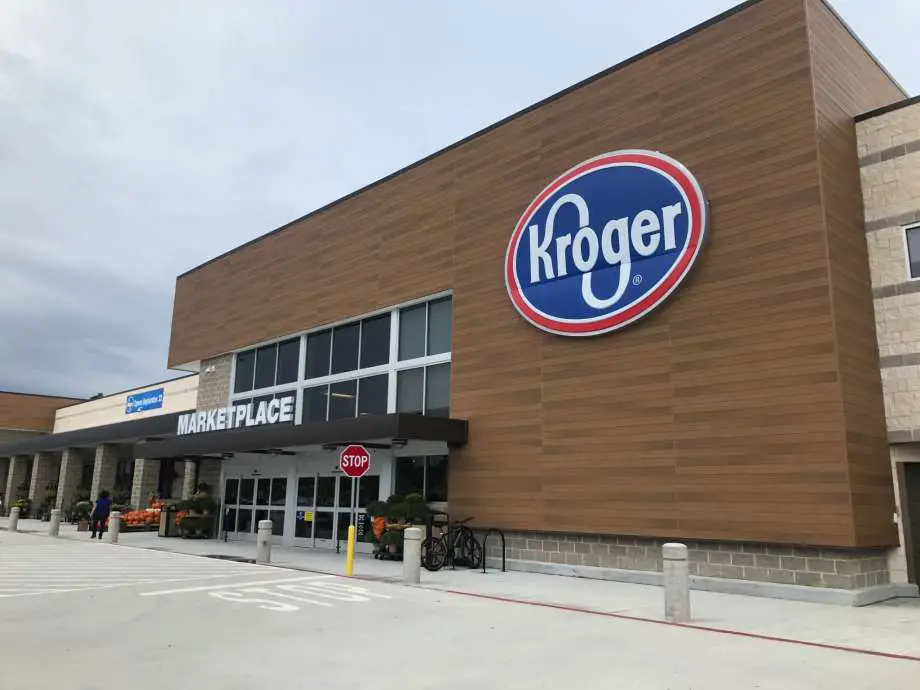Kroger Mission and Vision Statement Analysis

Kroger mission statement is “To be a leader in the distribution and merchandising of food, pharmacy, health, and personal care items, seasonal merchandise, and related products and services.” In this statement, Kroger echoes its unwavering efforts to impact on specific areas within the retailing business. The company gives a snipped of its strategic approach within the statement and also emphasizes on the importance of its clients. One can identify key features related to this statement such as:
- Improvement of communities. Through its numerous activities that directly improves the conditions of the people within the areas of its operations, Kroger has proven itself as a company that considers its corporate responsibility as second to none other. While focusing on its growth, Kroger has shown repeatedly that its success comes from the bonds it has with its clients. In fact, it has a variety of programs that demonstrate its willingness to give back to the community through education and conservation strategies.
- Growing retailing sector. Considering retailing is the primary business that has kept Kroger afloat for more than a century, its commitment to seeing this sector grow is undisputed. The company is known as a pioneer of several practices and related ethical principles represented by its wellness your way strategies, as well as standardized pricing systems that offer the best prices for its customers.
Introduction
Kroger is a company that has stamped its dominance in the retailing sector with its strategic operations and positioning. The company has ascertained its resilience through the years, even during the tough economic eras across the globe, for over a century.
In fact, ever since Bernard Kroger conceptualized this business in 1883, its growth has been on an upward trend defying the forces of economics. Such resilience over the years has been due to the focus and strength within Kroger mission and vision statements. A company vision statement gives its roadmap or a premeditated level of achievement in the future.
Although Kroger vision statement has been adaptive of the changes in business trends over the years, the statement has maintained one crucial element of its identity – the leadership the company has in the industry. It emphasizes how it sees itself as the dependable entity to lead the other retailers.
The mission statement of a company comprises the strategic approaches that would enable the management get to this vision. In the case of Kroger, the mission statement identifies the key areas the company wants its presence to be most felt.
Kroger holds its core values in high ostentation. They are the principles that have kept the company together for thus long. Ideally, these have redirected all the focus of the company towards the achievement of the mission and vision.
Vision Statement
Kroger vision statement is “To be a leader in the distribution and merchandising of food, pharmacy, health, and personal care items, seasonal merchandise, and related products and services.” Its focus clearly lies on the leadership potential that the company has exhibited when it comes to streamlining and stimulating progressiveness in this sector. Based on the framing of this vision statement, the following features emerge:
- To be a leader. The position of Kroger in at the global space speaks volume about the influence of this company in the retailing industry. Kroger continues to display this leadership role through its well-structured system of operation and payment mechanisms, together with leading in the variety of services it provides, the attractiveness of these services and quality attached to each.
- Distribution and merchandising. Kroger satisfies this need in its vision statement through the variety of items it has for its customers to choose from. In fact, its diversity explains its status as one of the top general retailers in the U.S.
Core Values
Kroger core values comprise “Honesty, integrity, respect, diversity, safety, and Inclusion.” They are the pillars that have kept this establishment in line with its mission and vision. They comprise the outlined factors:
- Honesty
- Integrity
- Respect
- Diversity
- Safety
- Inclusion
Kroger has been vocal in emphasizing on the need to do the right thing while serving its customers as shown by its first and second values. It also highly values respectful treating the customer and observing their rights. Together with protecting them through involvement in the company program, Kroger has created a loyal audience that makes it one of the top companies across the globe.
References
- Campbell, A., & Yeung, S. (1991). Creating a sense of mission. Long range planning, 24(4), 10-20.
- Carton, A. M., & Lucas, B. J. (2018). How can leaders overcome the blurry vision bias? Identifying an antidote to the paradox of vision communication. Academy of Management Journal, 61(6), 2106-2129.
- David, F. R. (1989). How companies define their mission. Long range planning, 22(1), 90-97.
- Desmidt, S. (2016). The Relevance of Mission Statements: Analysing the antecedents of perceived message quality and its relationship to employee mission engagement. Public Management Review, 18(6), 894-917.
- Esbjerg, L., Burt, S., Pearse, H., & Glanz-Chanos, V. (2016). Retailers and technology-driven innovation in the food sector: caretakers of consumer interests or barriers to innovation?. British Food Journal, 118(6), 1370-1383.
- Jantz, R. C. (2017). Vision, innovation, and leadership in research libraries. Library & Information Science Research, 39(3), 234-241.
- Klemm, M., Sanderson, S., & Luffman, G. (1991). Mission statements: Selling corporate values to employees. Long range planning, 24(3), 73-78.
- Kroger – Home.
- Leuthesser, L., & Kohli, C. (1997). Corporate identity: The role of mission statements. Business Horizons, 40(3), 59-67.
- Martin, E. M., Cowburn, I., & Mac Intosh, A. (2017). Developing a team mission statement: Who are we? Where are we going? How are we going to get there?. Journal of Sport Psychology in Action, 8(3), 197-207.
- Milliman, J., & Clair, J. (2017). Best environmental HRM practices in the US. In Greening People (pp. 49-73). Routledge.
- Pearce II, J. A. (1982). The company mission as a strategic tool. Sloan Management Review (pre-1986), 23(3), 15.



I am very disappointed in your decision to close two stores in Long Beach California due to your unwillingness to pay your employees hero pay to which they are surely deserving.
I have been a very satisfied Ralph’s shopper for many, many years and am now faced with the difficult decision that I will shop elsewhere and I do have many options, which I will now explore. I read your mission statement and find that statements such as “giving back to the community, bonding with your clients, serving your customers, and doing the right thing” don’t ring true. Finding employment for your employees in other far-flung locations and leaving all your shoppers without a convenient market is hardly “doing the right thing”. I guess the bottom line is more important to you than being a good neighbor. Too bad.
In your CORE VALUES, Safety should be your first pillar as it is always the most important. If customers/employees don’t feel safe your other pillars are useless.